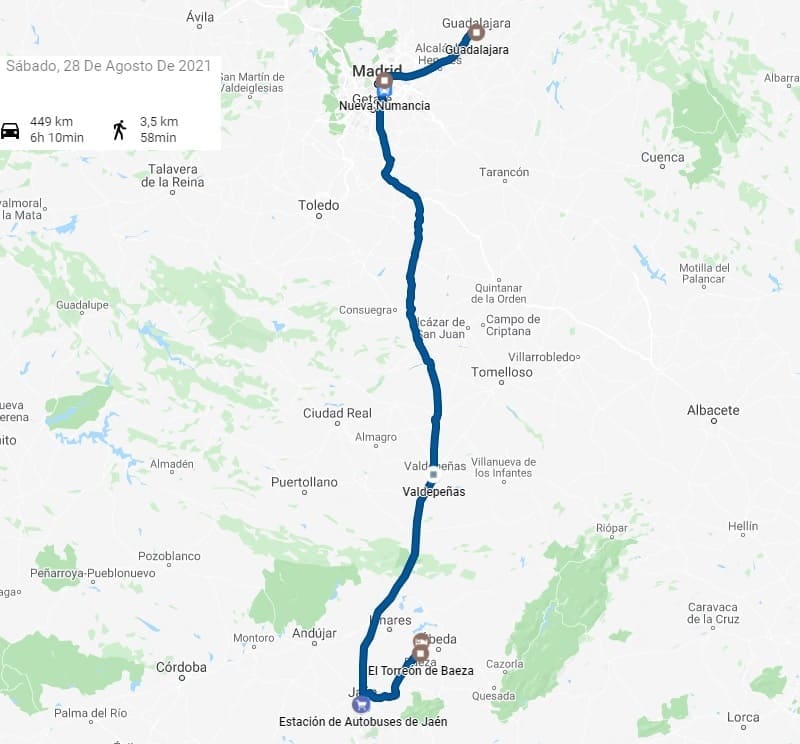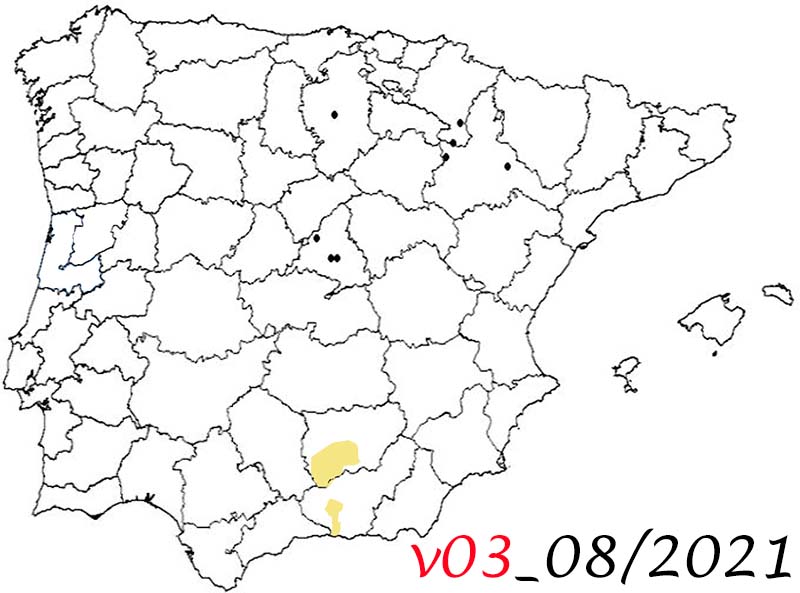

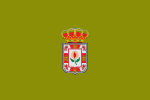
3. Travel through the South of Spain, Jaen and Granada
3. Travel through the South of Spain, Jaen and Granada
August 28 to 31, 2021
Day 3, Granada
August 30, 2021
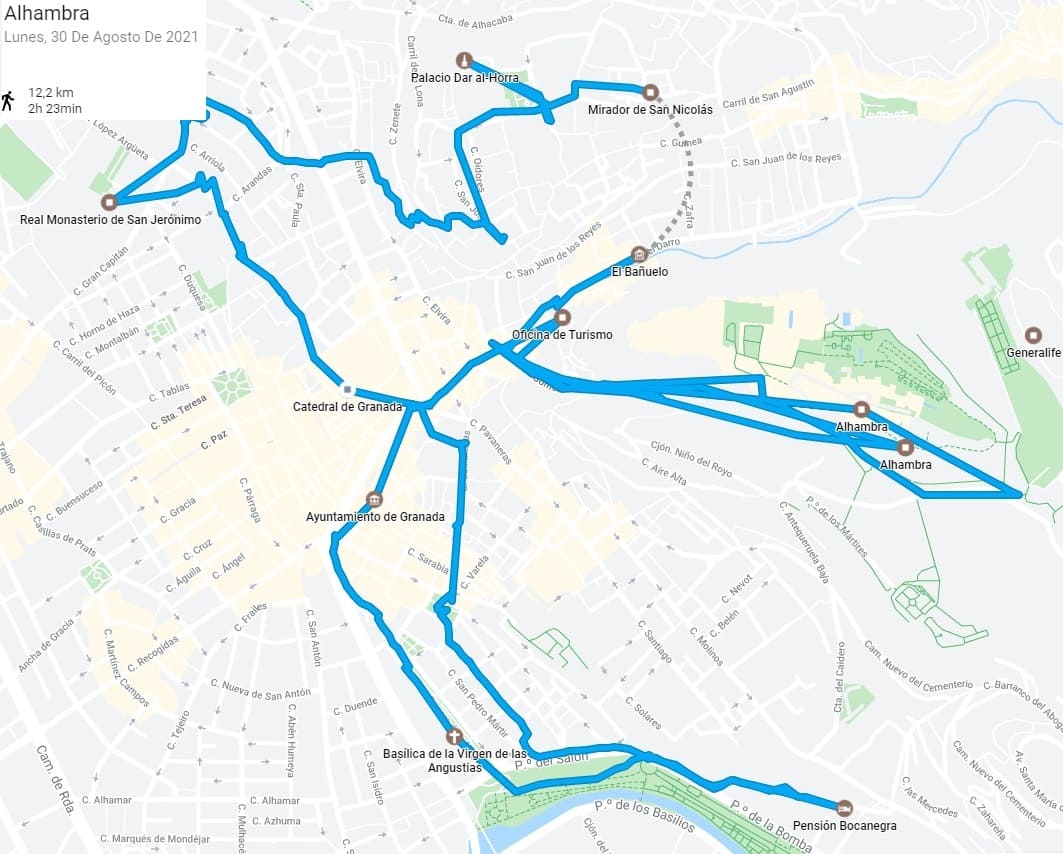


59. Granada
59. Granada
First I leave the hostel that is in the heart of Granada, next to the Paseo de la Bomba next to the Genil river. Two fountains stand out, that of the lions and the fountain of Las Granadas.
Continue to the magnificent Basílica de las Angustias where the patron saint of Granada is. This basilica had its origin in a previous hermitage that was dedicated to Saints Úrsula and Susana, and that appeared as an annex to the parish of San Matías, erected in the year 1501. As it was very loved and visited, it was expanded in size, raising it to church.
For this reason, a small church was built in 1585, in which a new image was venerated, replacing the original one.
The interior is baroque in style and highly decorated with high quality carvings. Of great interest is the dressing room that presides over the main altarpiece of the church, where the image of the Virgin, Nuestra Señora de las Angustias, patron saint of the city of Granada, is housed. Although it was built at the same time as the church, it was redecorated later with all the splendor of the Baroque, thus constituting one of the most representative churriguera-type works in Granada, with its pomp of golden leaves and splendid colored marbles.
I continue and arrive in the heart of Granada in one of the two most important squares,
the Plaza del Campillo. With
the fountain of the Battles and the Isabel La Católica theater. I continue towards Avenida de los Reyes Católicos and visit
Plaza del Carmen where the
town hall is, a 19th-century building.
A little further away we find the golden fold, with its Arab patio, a free monument that is one of the outstanding monuments that are being promoted in the city and for the others you have to pay a ticket that gives you access to another 5 more.
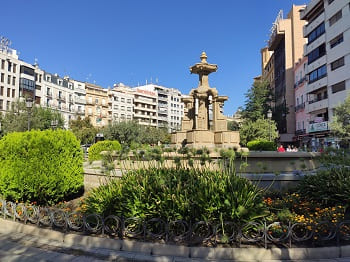
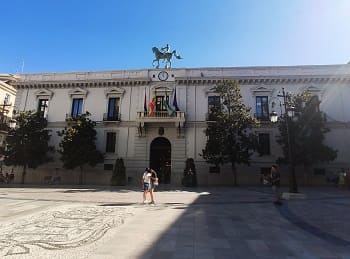
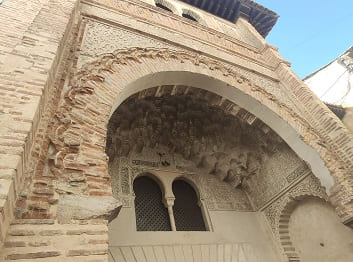
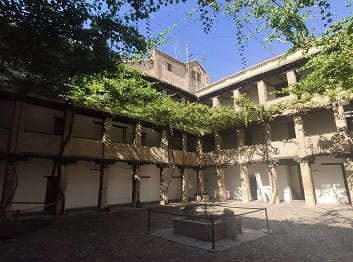
We continue further forward and come across
Plaza Isabel La Católica, with its characteristic fountain, the second most important square next to El Campillo.
I continue straight ahead and I arrive at
the Royal Palace of the Chancery. This building is the best example of mannerism in the province. This style is the precedent of the Baroque and is a Renaissance style with many more details but following the proportions of the classical era.
Next to it
the Pilar del Toro fountain and the church of San Gil next to the Tourist Office. This 16th century church was destroyed in the revolution of 1868 and its remains would be brought to this other temple that was that of Santa Ana. Everything of value would arrive there and the interior would be remodeled in the image of the church of San Gil. It has a mixture of styles, between Mudejar and Baroque.
There I will obtain information to make a map of what to see after the Alhambra, a must-see in the city. From there I head to the Alhambra.
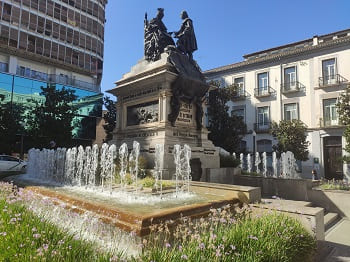
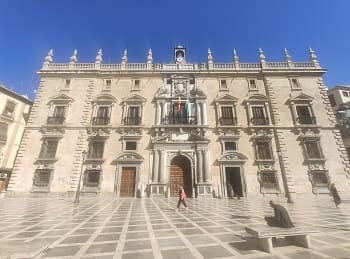
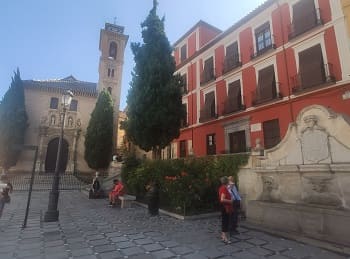
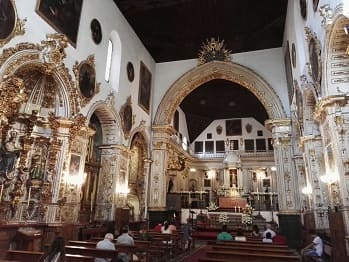
The first thing I see on the way
to the Alhambra Palace, as I go up the cobbled slope, is
the Gate of Justice, and also the Pillar of Charles V. To be able to access the enclosure it is necessary to buy the ticket that is bought from the access pavilion at the end.
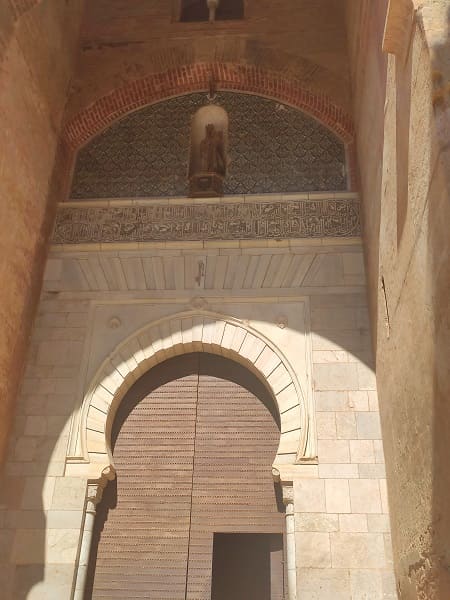
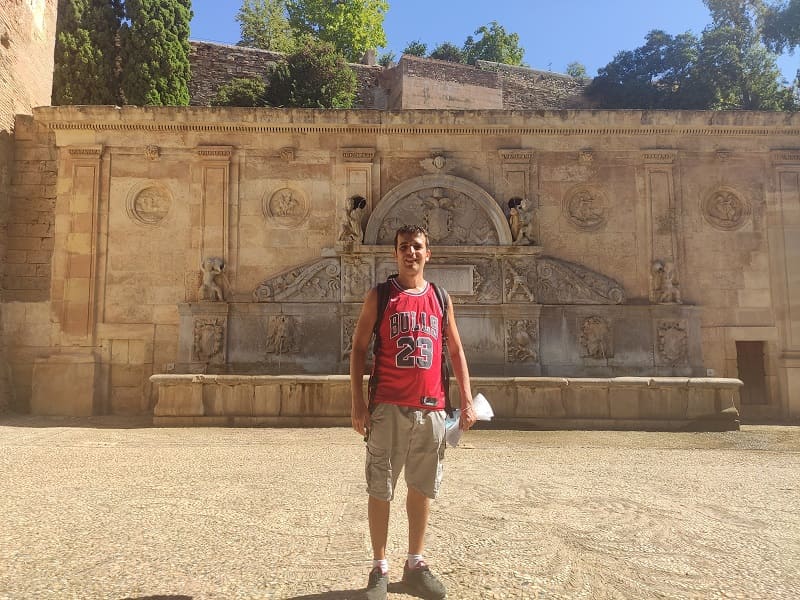
Once inside I saw everything in this order,
the door of the Seven Floors, the palace of Abencerrajes, the door of the Carros, the church of Santa María and the palace of Carlos V. Inside this palace there is a permanent exhibition hall. The palace is quite impressive from the outside and the patio itself.
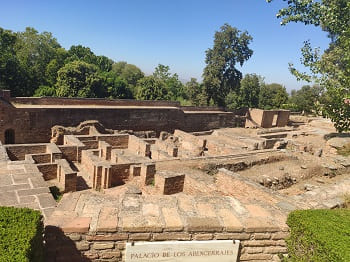
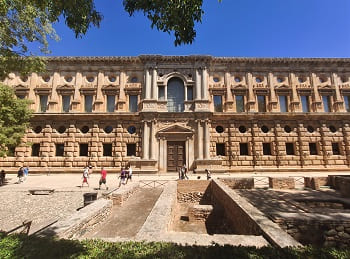
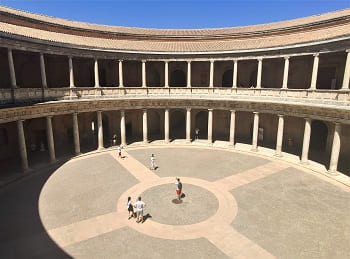
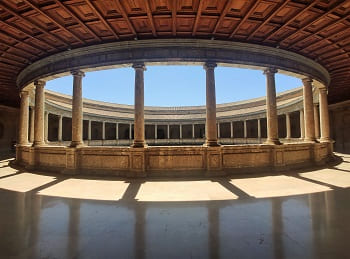
Once seen, I go to
the Puerta de Vino, on the way to the Alcazaba, with steps such as the Plaza de los Aljibes, the Torre Quebrada, the Torre del Cubo, the Torre de la Vela, and leaving towards the garden of the Adarves. The appointment for
the Nasrid palaces was at 2:30 p.m., and after a short walk through the premises I entered.
In the following image you can see Granada from the Torre de la Vela de la Alcazaba.
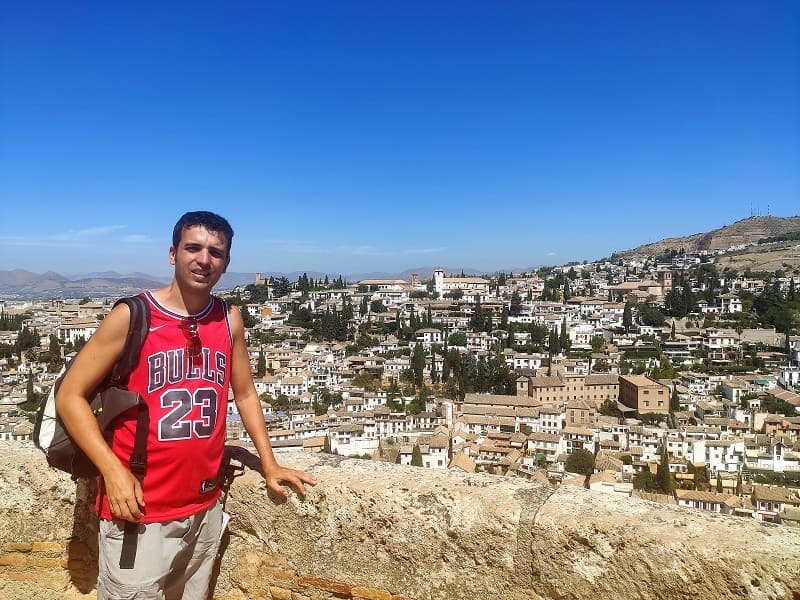
In these images we see the Nasrid coffered ceiling next to the Patio de Arrayanes. The patio of myrtles is one of the patios of the Palace of Comares in the Alhambra. It is to the east of the courtyard of the Golden Room and to the west of the Baths room and courtyard of the Lions.
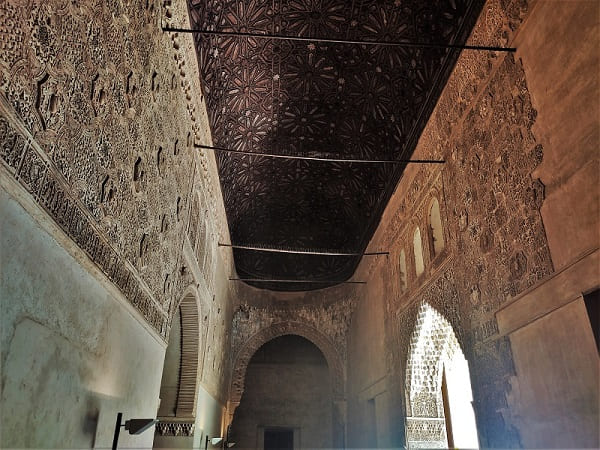
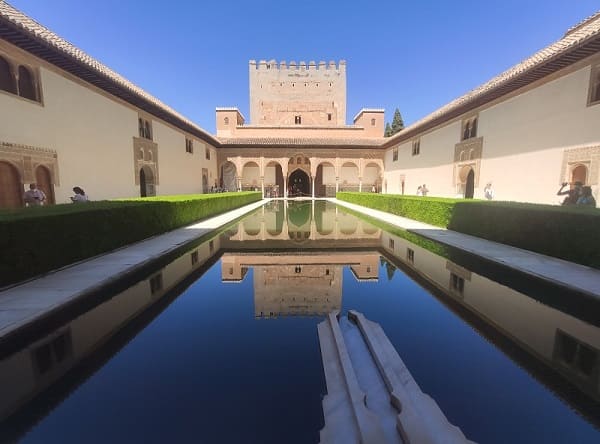
Next, the famous Patio de los Leones. From the late fourteenth century. The arches of the patio and the decoration are inspired by the courtyard of maidens of the Reales Alcazares in Seville.
On the other hand, in the last image, the ceiling of the Kings room of the palace. There are several paintings and in this case the ten kings of the Nasrid dynasty are represented. The painting is a mixture of the Arabic and Italian styles, since artists were sent from Castile. Let's not forget that there was a war of the throne a century before the conquest of Granada and one side was helped by the Christians.
Another of the most beautiful ceilings is in the mucarabes room where Felipe II would leave his mark by putting his coat of arms, when Portugal and Spain were a single empire. Carlos V would also leave his mark on the palace, having his own room with a personalized coffered ceiling. But even so, not settling for that, he created his own imperial palace within the complex as I have mentioned before.
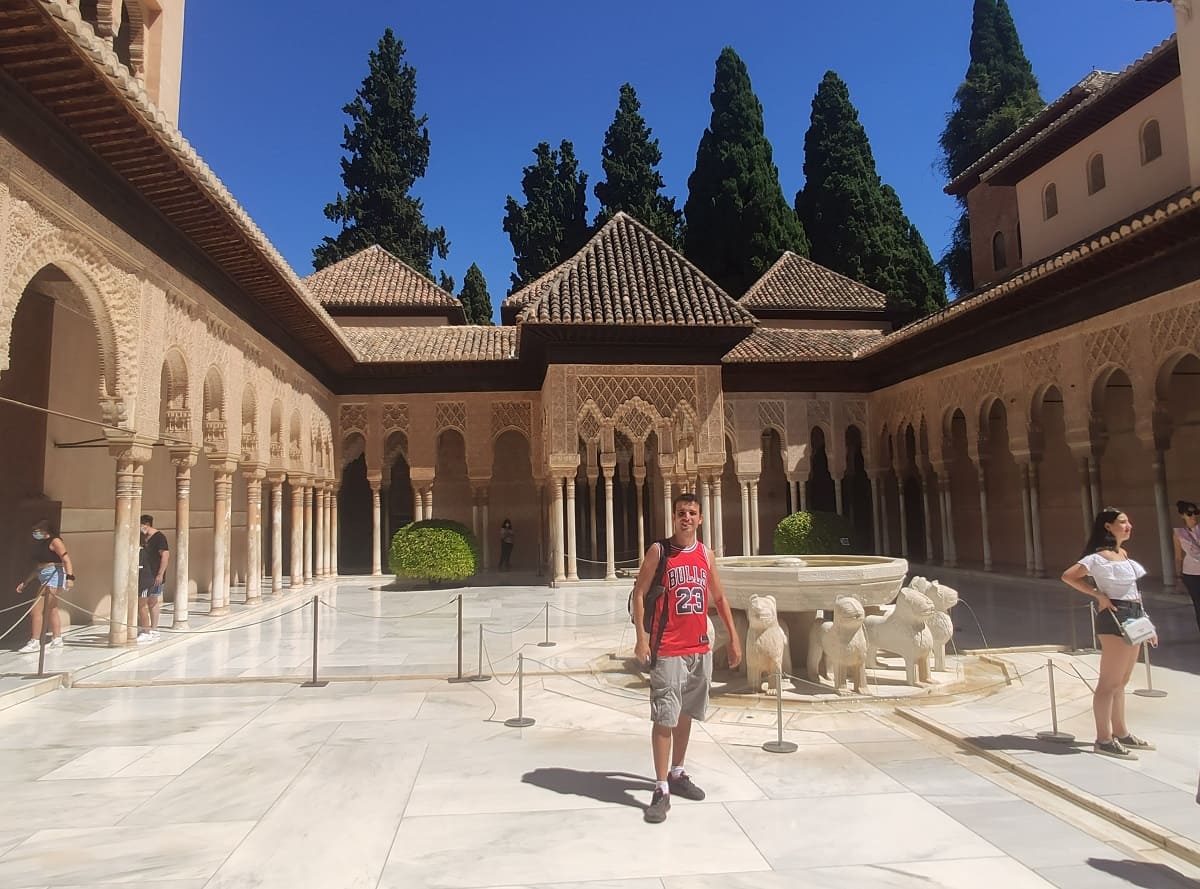
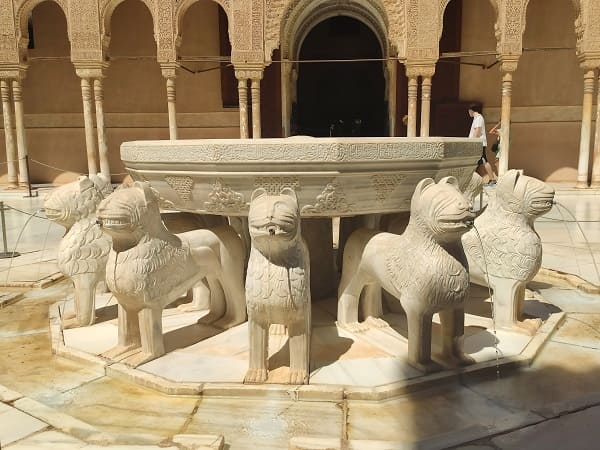
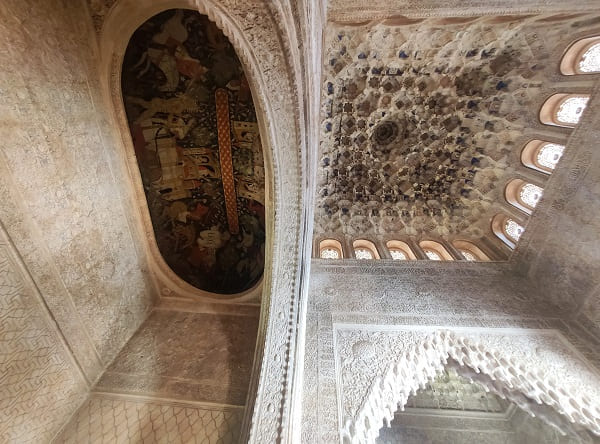
Inside the Nasrid palaces, in this order, I find the Patio de los Comares, the Comares baths, the Mocárabes room, then the Patio de los Leones (in the image), the Dos Hermanas room, the Abencerrajes room, and the room of the Kings. All this is the jewel in the crown of Granada, the rooms and the most important architecture that the Arabs left us on the peninsula.
Then I go through the room of Carlos V, the Peinador de la Reina, the Hall of Ambassadors, the Torre de Comares, the Patio de la Rejaa, all this more later with Carlos V who increased the rooms but preserving all the Arab representations. Once outside the palace I find another palace such as the Partal and the Tower of the Ladies, as well as the remains of Yusuf's palace.
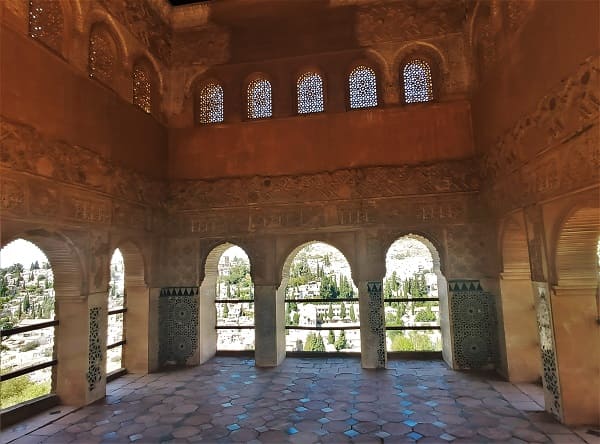
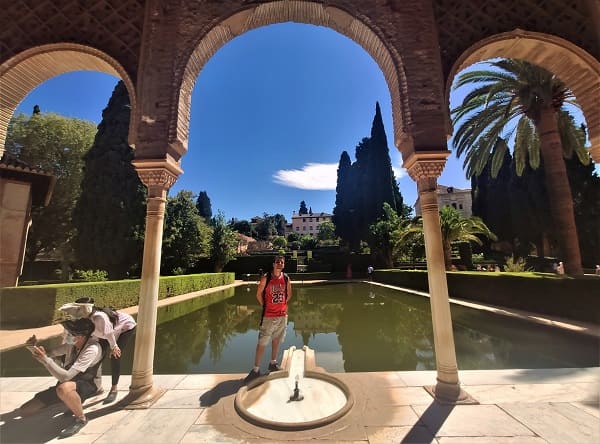
Then I walked through the entire wall seeing the different towers and gates of the wall until I reached the Generalife, its palace and its gardens that can be seen in the image, as well as the water staircase and the romantic viewpoint. Once I had seen the Generalife, I left the premises arriving at the Puerta de las Granadas.
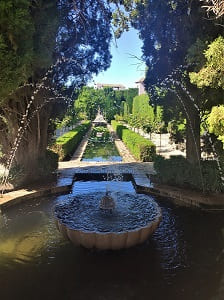
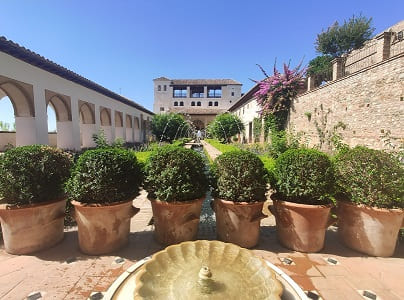
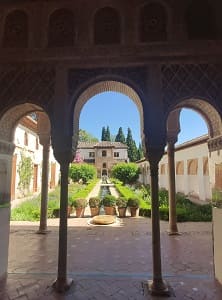
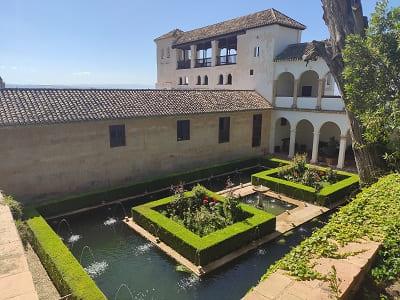
At the exit, I continued parallel to the river Darro, where I would visit
the Arab baths in El Bañuelo, somewhat smaller than those in Granada but completely preserved. This monument entered with the 5 voucher from the tourist office.
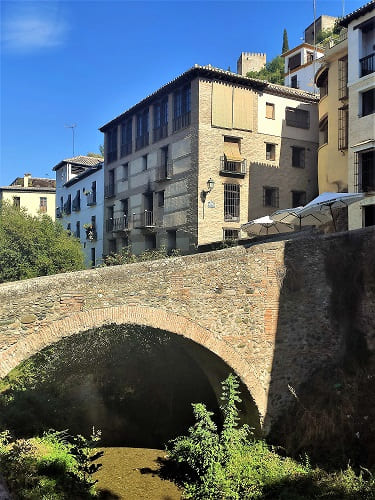
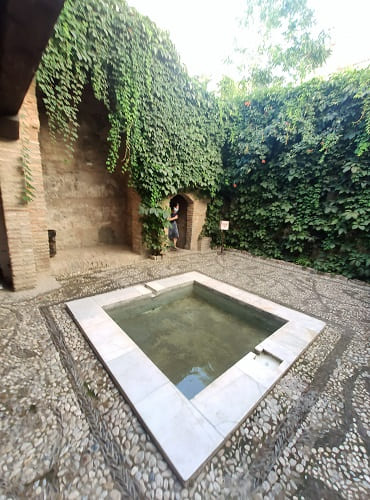
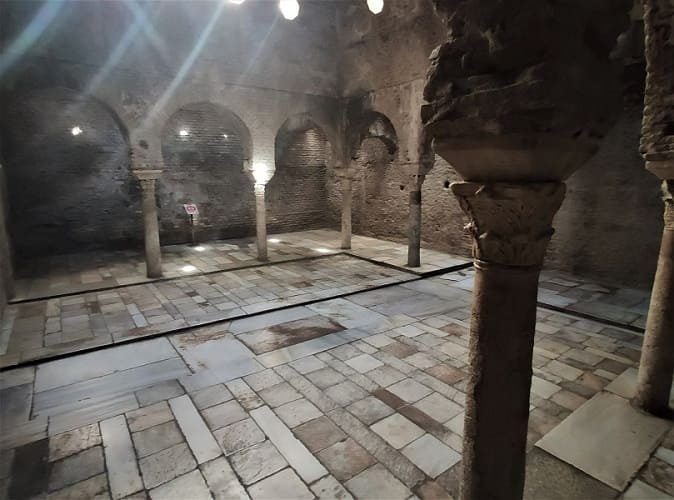
We continue with the Puerta del Tablero,
the house of Castril, the church of San Pedro and San Pablo, the convent of San Bernardo. I arrive at the Paseo de los Tristes where I will eat in a restaurant. There is the Arab house of the Horno de Oro (seen in the image) that together with the Dobla de Oro, the Bañuelo, the house of Chapiz that I will see later and the palace of Dar Al Horra are part of the set of those 5 monuments visitables that they are promoting.
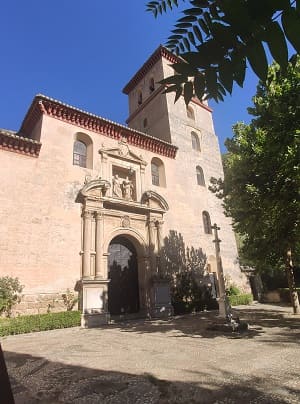
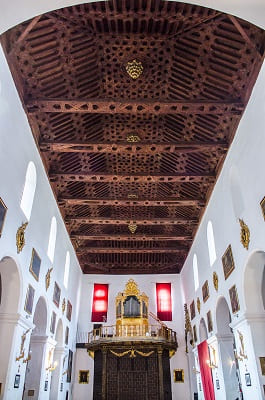
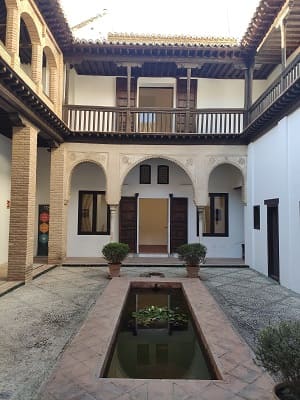
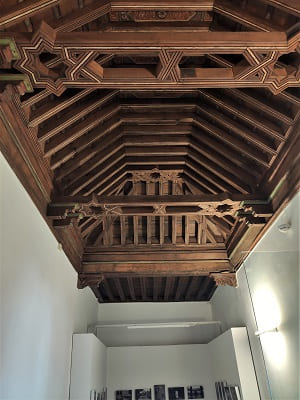
Then I would go up to see
the Chapiz house. They are a set of two houses that show what the residences of the Moors were like in the 15th and 16th centuries, although their origin is earlier. After being expelled, King Felipe II would give them to a personal secretary of his who would lease them to people from the town. In the 20th century they would be restored and valued.
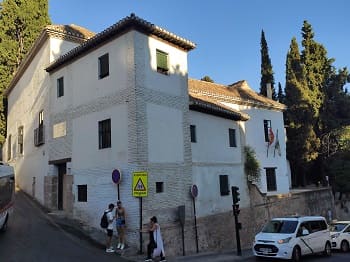
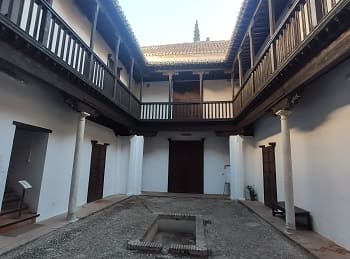
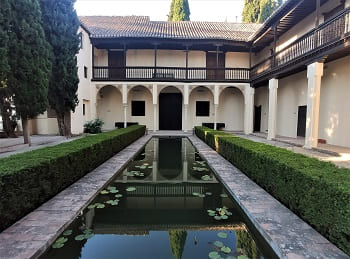 The palace of Dar Al Horra
The palace of Dar Al Horra, which is in the Albaicin neighbourhood, is one of the few Nasrid buildings that is still fully standing in the city, although, unfortunately, its state of conservation is not what it would be worth. It would correspond for its beauty, history and for the legacy that its walls tell us.
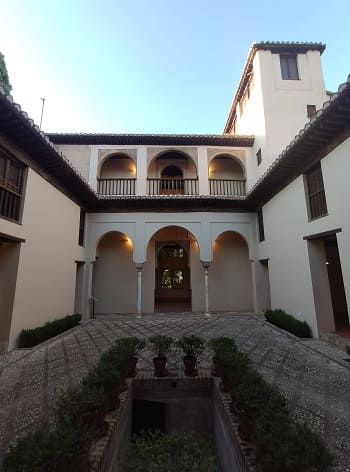
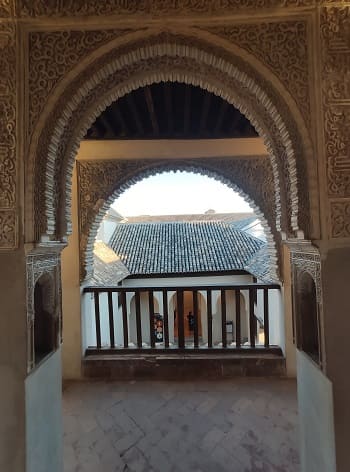
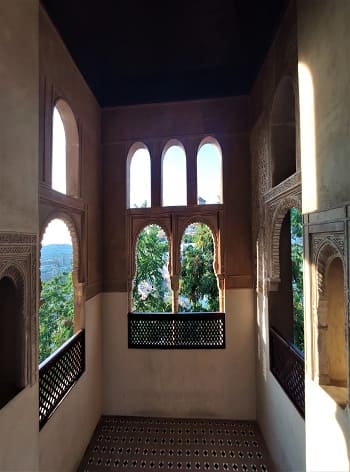
From the Albaicín neighborhood, you would first visit
the church of El Salvador, and then
the church of San Nicolas, both in the 16th century Mudejar style and their magnificent viewpoint towards the Alhambra, the great mosque of Granada that also had a viewpoint with good views.
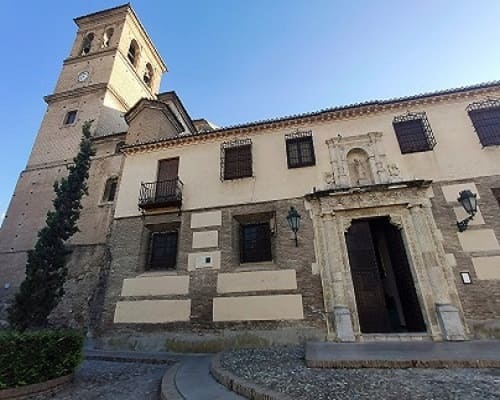
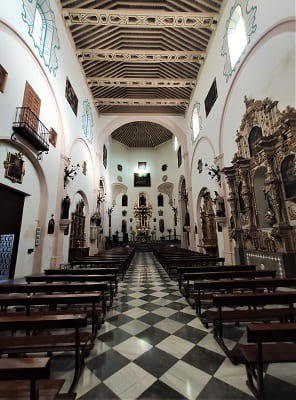
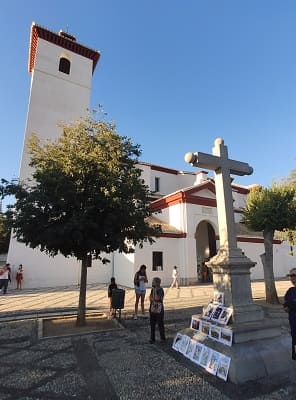
These are the views from the lookout:

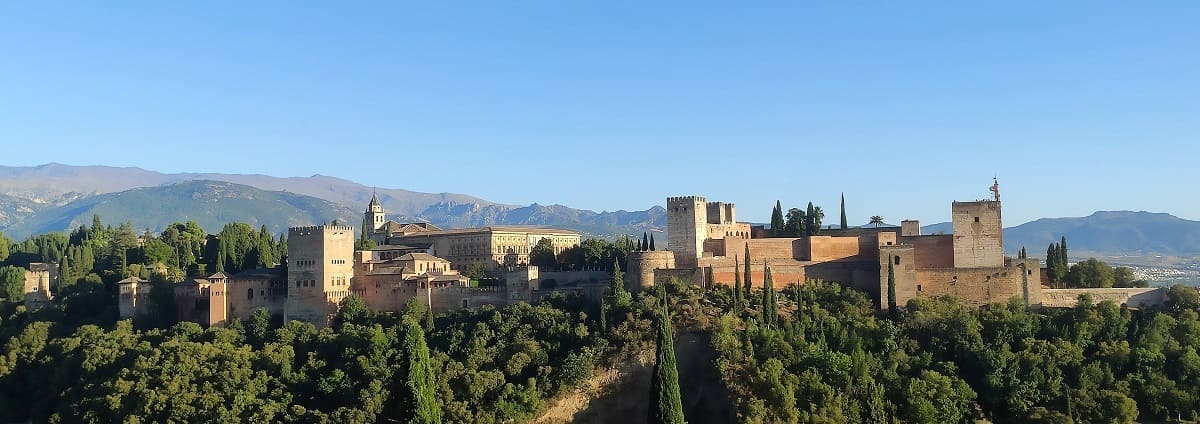
Continuing down the small square of Cristo de las Azucenas to see
the convent of Santa Isabel la Real which has a church with paintings, sculptures and ornaments from the early 16th century. It was built on a palace from the Islamic period.
Next to this convent we find the Plaza del Gallo with
the church of San Miguel, which can be seen in the image, with a very ornate Baroque-style altarpiece and a Mudejar ceiling that is in perfect condition. Next to it is the palace mentioned before, that of Dar Al Horra, which is from the same period as the Alhambra.
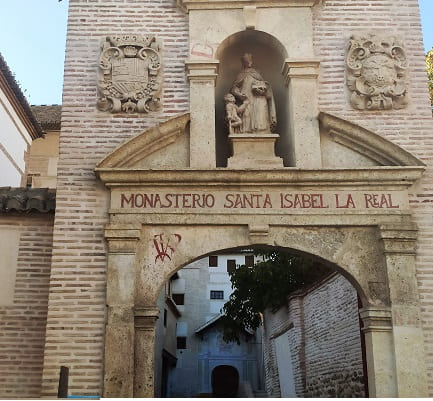
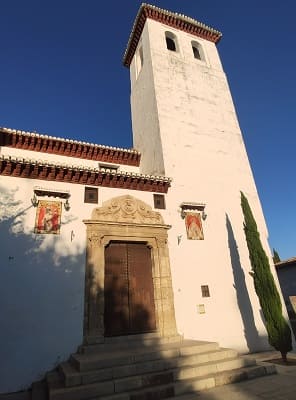
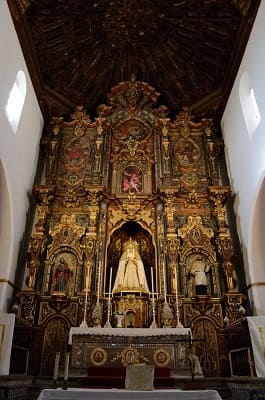
Going down the street towards the neighborhood of the cathedral, we pass by another religious building such as the church of San Jose and before seeing the cathedral we will visit
the Sanctuary of Perpetuo Socorro, a building from the end of the 17th century in the Renaissance.
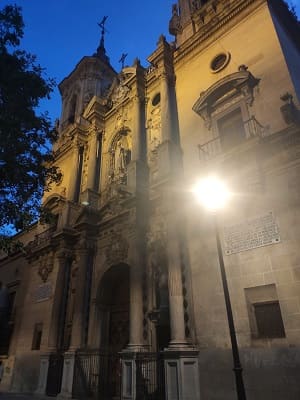
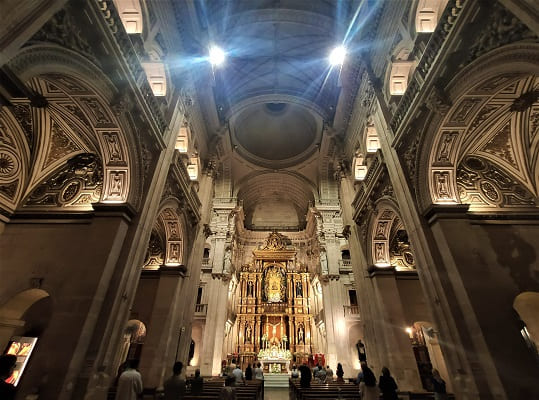
In front is
the Royal Monastery of San Jerónimo, the most important religious building in Granada, even in front of the cathedral, followed by the Sacromonte and the Cartuja. This building began to be built at the beginning of the 16th century by order of Carlos V. The predominant style was the Gothic of the time, which is why the exterior is almost complete. Two decades after the start of the works, they would change architects due to the change in the promoters of the work, which became the family of the Great Captain, one of the most important soldiers in the history of Spain. This came because the Chapel of this famous soldier was going to be executed, whose remains currently rest in the monastery. It would go from Elizabethan Gothic to a Renaissance style that would end at the end of the works in the Mannerist style. The iconographic program was designed to highlight the military greatness and heroism of the Great Captain, who is buried in the transept along with his wife, María de Manrique. The monastery is very large and has two cloisters.
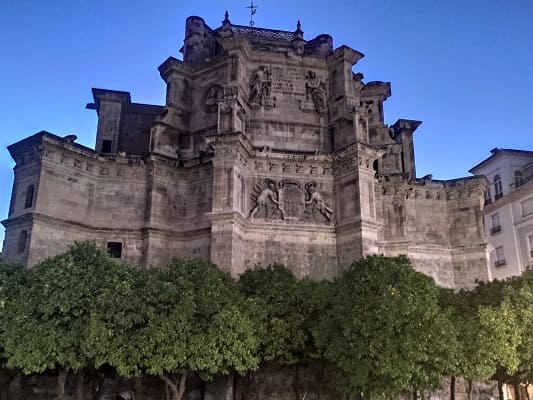
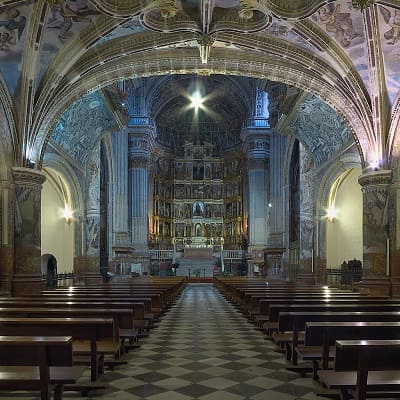
Near the monastery is
the church of Justo y Pastor from the late 16th century in Renaissance style.
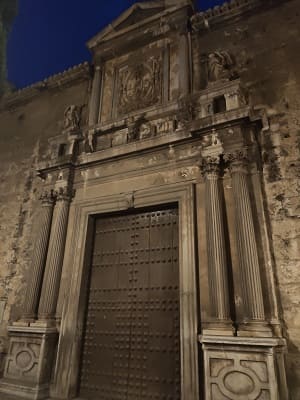
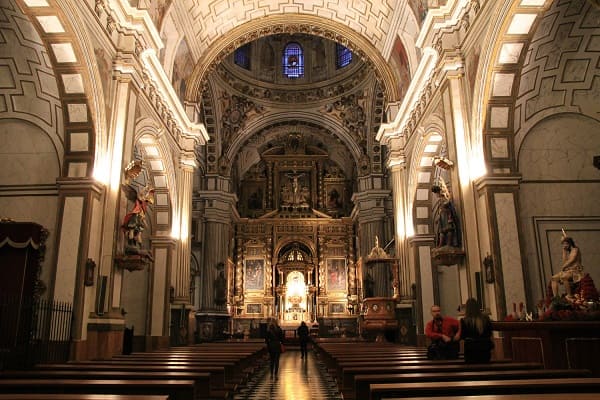
To end, a visit to the
cathedral quarter, from the 16th century, which would be initiated by Carlos V with the aim of magnifying Granada and putting an end to any ties with Islam.
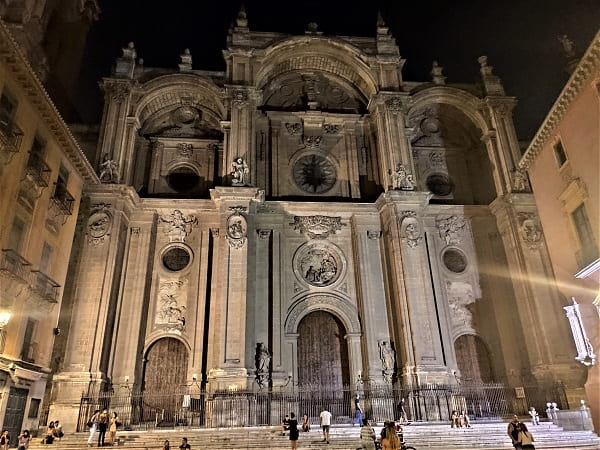
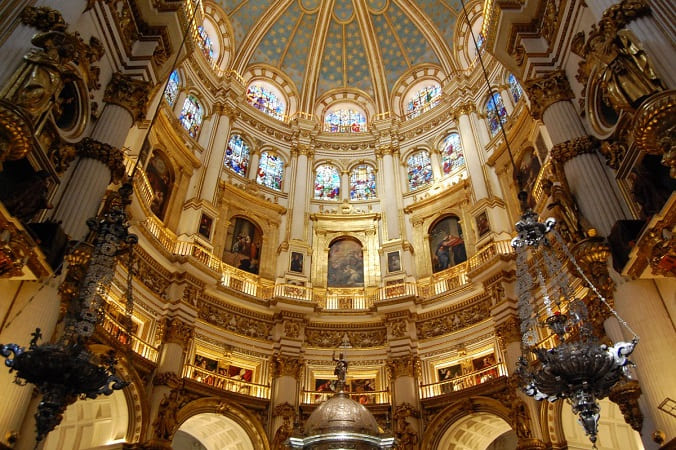
A pantheon will be made for their grandparents, the Catholic Kings, who were the ones who culminated in the capture of Granada. This pantheon is
the main chapel and is one of the most prestigious funerary works of the 16th century.
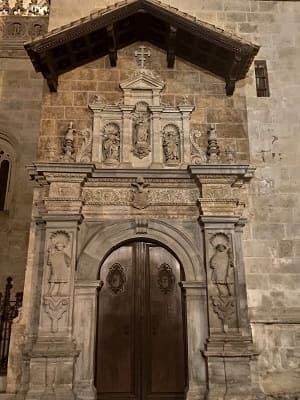
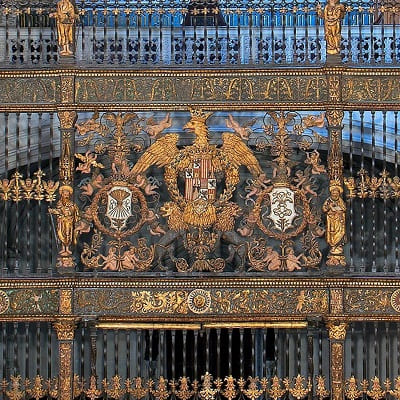
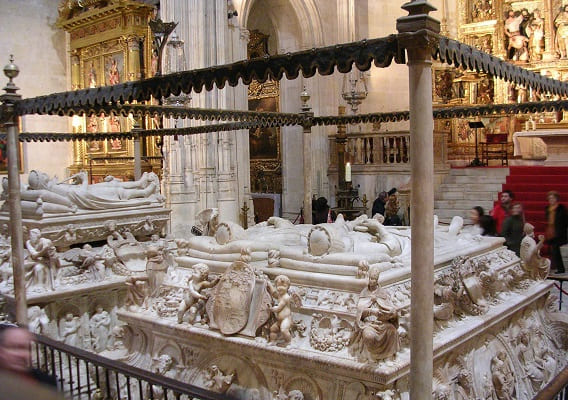
On the outskirts of the cathedral is the Alcaicería, an old Arab market or bazaar, and
the Madraza palace (in the image below), impressive on the inside with decorations and Arabized walls like those seen in the Alhambra and also
the episcopal palace or curia of granada seen in the second image.
We return along Calle Pavaneras, perpendicular to Calle de los Reyes Católicos in the direction of the hostel. On the way I saw
the convent of San Francisco from the outside, the palace of the Marquises of Casablanca, the building of the general captaincy (in the image), the palace of the counts of Gabia, the church of the Comendadoras de Santiago and the church of san Matías.
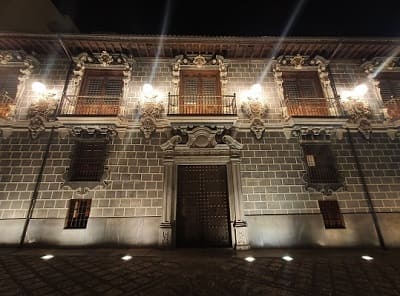
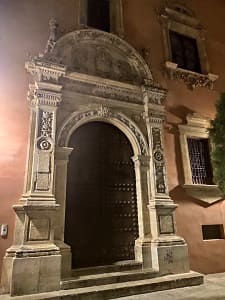
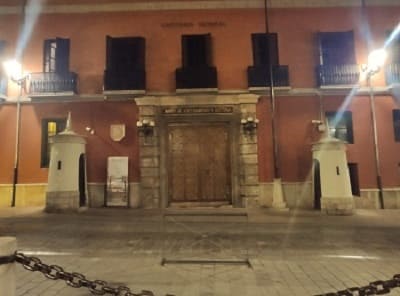
With this we put an end to the visit to Granada where all these monuments seen quickly from the outside will remain to be seen from the inside on another visit.
Palace of the Alhambra, c.XI-XIV.
6
Day 4, Granada to Motril and Guadalajara
August 31, 2021
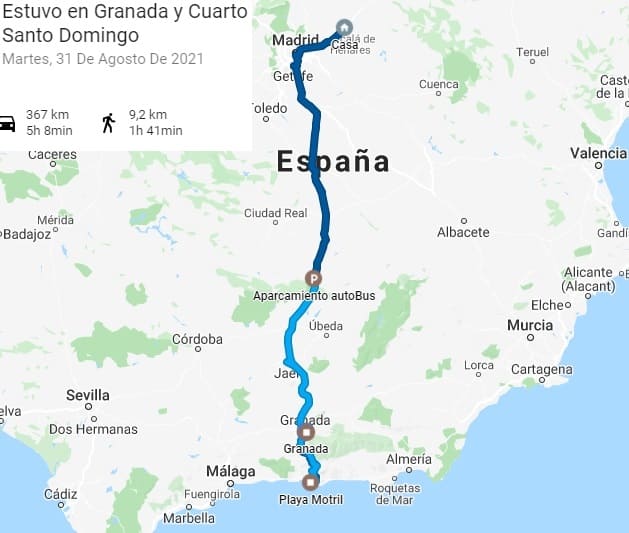
First, I visited some places that I had yet to see, such as the Royal Room of Santo Domingo, a Moorish palace before the Alhambra. Only one room remains of the palace, with its doors and coffered ceilings, as well as excavation remains of what it was in its day. It complements an exhibition of images and models of the Alhambra to see its resemblance.
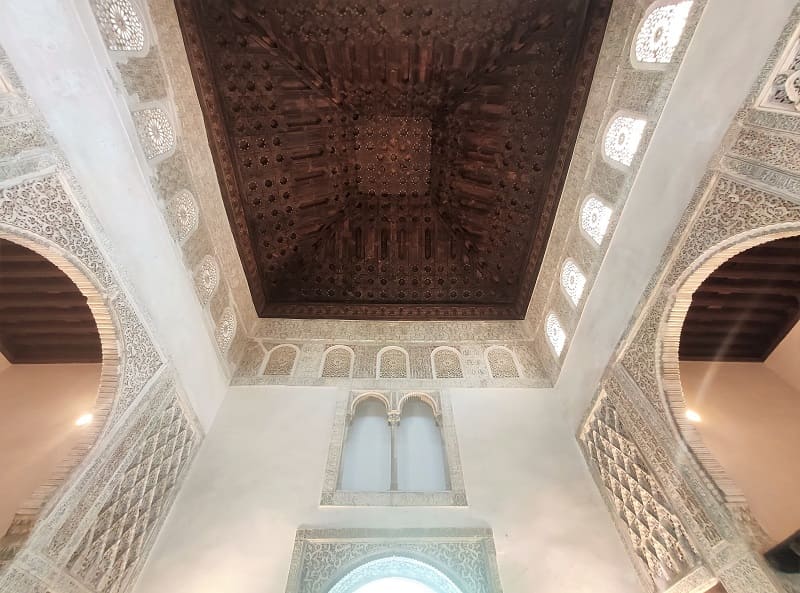
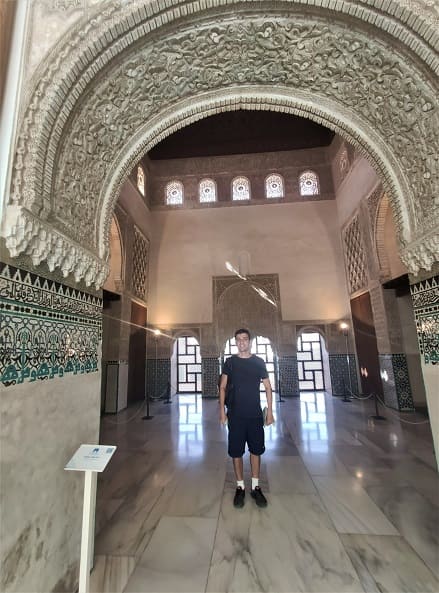
Near the palace the church of Santo Domingo.
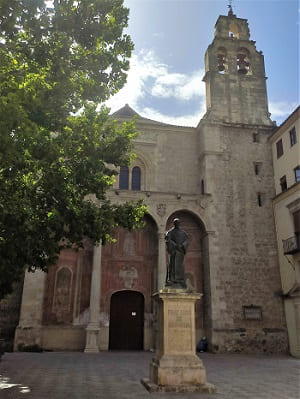
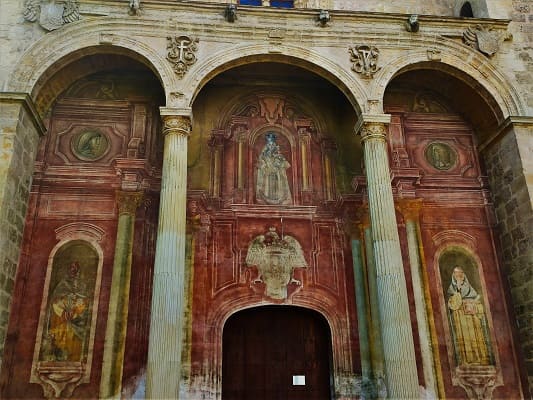
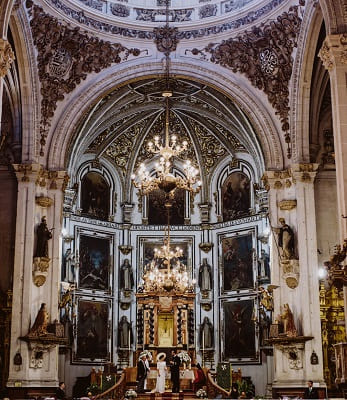
And the church of san Mateo.
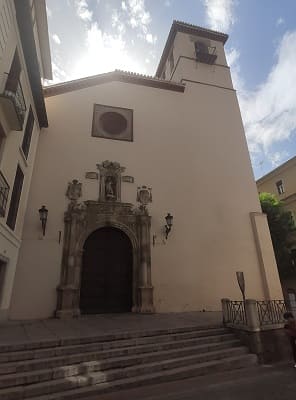
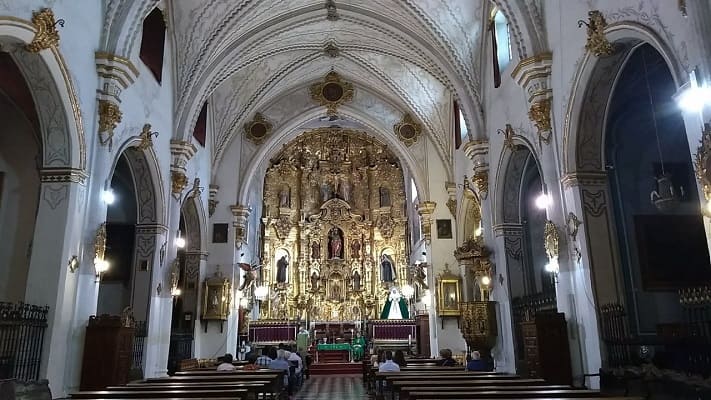
Then I took the car to Motril.
In Motril I went to the beach passing by the sanctuary of Nuestra Señora de la Cabeza, a church built in the 17th century on top of the old Arab citadel and located in the Park of the Peoples of America. This park is in stark contrast to the barren terrain around it.
Finally, back to Guadalajara, almost 700 kms...
Sanctuary of Nuestra Señora de la Cabeza, 17th century and beaches.
I
Day 1, from Guadalajara to Jaen (CLICK to continue)
August 30, 2021
